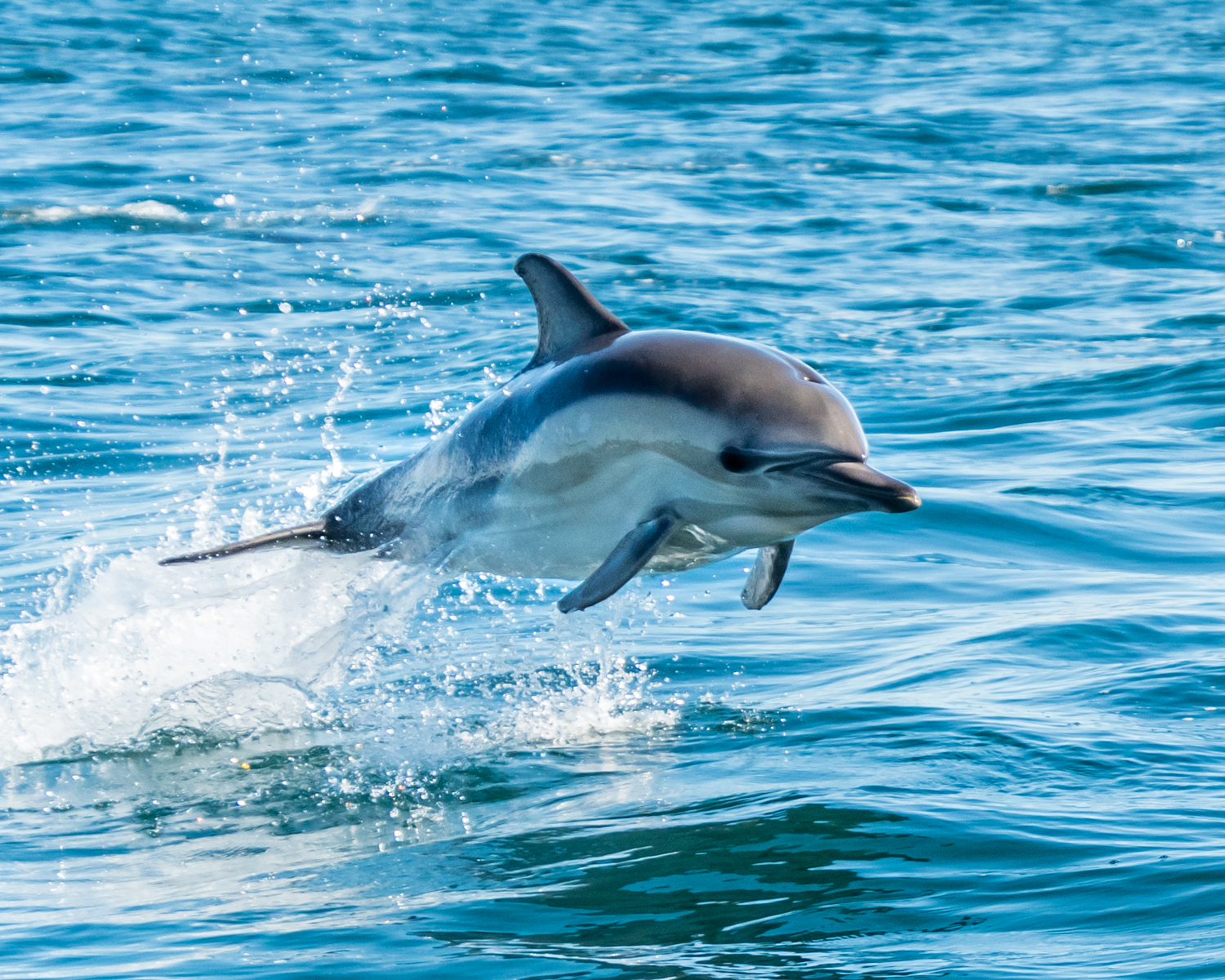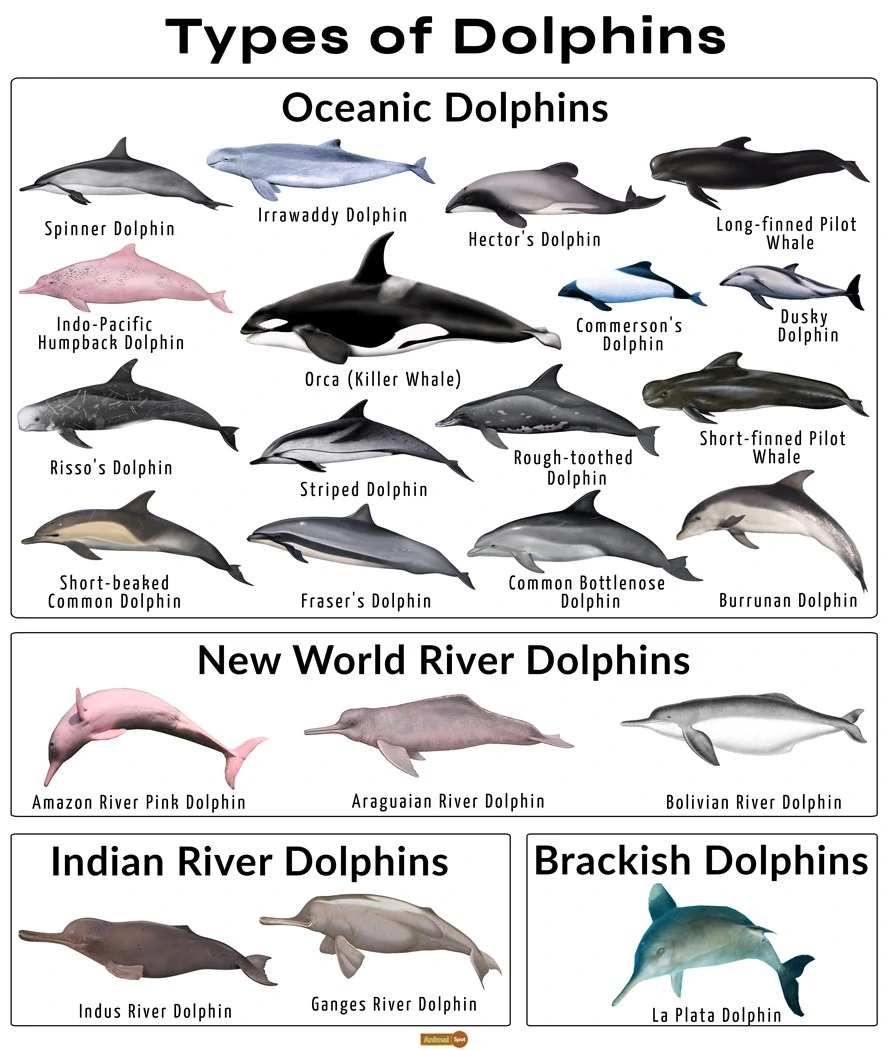Discover Fascinating Dolphin Facts That Will Amaze Your Friends
Wiki Article
Dive Into the Sea: Exciting Dolphin Truths for Ocean Lovers
The world of dolphins provides a remarkable junction of knowledge, social actions, and eco-friendly value. With around 37 types, these aquatic mammals exhibit a variety of remarkable characteristics that not just mesmerize ocean fanatics yet additionally emphasize their crucial function in aquatic environments. From their complicated communication approaches to their remarkable analytic abilities, dolphins challenge our understanding of pet intelligence. The pushing need for preservation efforts to shield these animals and their habitats elevates crucial questions concerning our responsibility in the direction of the ocean's inhabitants. What effects do these elements hold for our communications with these exceptional beings?Dolphin Variety Variety
Variety is a trademark of the dolphin family members, encompassing a large range of types that show unique physical characteristics, habits, and environments. The family Delphinidae, frequently referred to as oceanic dolphins, makes up about 37 types, each adjusted to specific environmental particular niches. The bottlenose dolphin (Tursiops truncatus) is renowned for its intelligence and flexibility, prospering in both seaside and open sea environments.In comparison, the whale (Orcinus whale), often referred to as the killer whale, is the largest participant of the dolphin household and is identified by its striking black-and-white pigmentation. Orcas show intricate social frameworks and searching strategies, showcasing the behavior variety within the household. Various other species, such as the spinner dolphin (Stenella longirostris), are noted for their acrobatic screens and preference for warmer waters, highlighting the versatility of dolphins to various aquatic ecological communities.
In addition, river dolphins, including the pink river dolphin (Inia geoffrensis), live in freshwater settings, even more highlighting the comprehensive environments that dolphins occupy. Dolphin Facts. This extraordinary variety not only enhances marine communities but likewise highlights the value of conservation efforts to protect these remarkable animals and their settings
Social Actions and Interaction
The complex social habits and communication approaches of dolphins are essential elements of their existence, facilitating group communication and improving survival. These extremely intelligent aquatic animals exhibit facility social structures, frequently forming sheathings that can vary from a few people to over a hundred. Within these groups, dolphins engage in actions such as cooperative hunting, social play, and mutual defense, which foster solid bonds among participants.Dolphins use a sophisticated array of articulations, including clicks, whistles, and body movement, to communicate details and reveal feelings. Their signature whistles serve as one-of-a-kind identifiers, similar to names, enabling people to call out to each other. This singing interaction is matched by non-verbal signals, such as jumping, slapping the water, and synchronized swimming, which better improves their communications.

Distinct Feeding Habits
Distinct feeding practices characterize dolphins, showcasing their versatility and intelligence in numerous aquatic atmospheres. These aquatic mammals are understood for their diverse diet plans, which largely contain fish, squid, and shellfishes. Their searching methods can differ dramatically, often customized to the specific victim and ecological problems.One remarkable technique is participating hunting, where dolphins operate in teams to herd institutions of fish into tight developments, making it less complicated for individuals to capture their meal. This social behavior not only enhances their feeding effectiveness but likewise strengthens social bonds within the pod. In addition, dolphins have been observed using a strategy called "fish-whacking," where they use their tails to confuse or stun fish, assisting in easier capture.
Another fascinating feeding behavior is echolocation, which allows dolphins to find target also in murky waters. By giving off audio waves and translating the returning mirrors, they can identify the size, form, and area of their targets. This amazing capacity emphasizes their adaptability in numerous environments, from superficial coastal areas to deeper nautical waters. On the whole, the special feeding behaviors of dolphins highlight their function as skilled killers within the marine community, demonstrating both intelligence and ingenuity.
Intelligence and Problem Resolving
Their knowledge is noticeable in their problem-solving skills, social interactions, and capability for knowing. Research study has demonstrated that dolphins can make use of tools, such as using aquatic sponges to secure their rostrums while foraging on the seafloor.Furthermore, dolphins show advanced interaction abilities, utilizing an intricate system of clicks, whistles, and body language. Dolphin Facts. This communication is important for working with team tasks, such as searching and socializing, illustrating their capability to function collectively in the direction of an usual goal. Their capability to recognize abstract concepts, consisting of self-recognition in mirrors, additionally emphasizes their cognitive sophistication
In controlled studies, dolphins have revealed a capability to solve problems and execute tasks that require both memory and crucial reasoning. see this page These interactions suggest not only knowledge however likewise a determination to engage with their atmosphere in novel methods. Generally, the cognitive prowess of dolphins puts them among one of the most smart species on the earth, promoting a deeper recognition for their function in marine ecological communities.
Conservation and Environmental Influence
Conservation efforts targeted at safeguarding marine ecosystems are critical for maintaining dolphin populaces and their environments. Dolphins are very delicate to ecological modifications, and their survival is intricately linked to the health and wellness of oceanic communities. Overfishing, contamination, and climate modification posture considerable risks to both dolphins and their settings.Overfishing interrupts the food chain, leading to a decrease in victim types necessary for dolphin survival. Toxins such as plastics and chemicals accumulate in aquatic atmospheres, endangering dolphins through ingestion and bioaccumulation. Enhanced water temperature levels and get redirected here ocean acidification, consequences of climate modification, even more threaten the fragile equilibrium of marine communities, affecting dolphin breeding and migratory patterns.
Conservation campaigns, including the facility of aquatic secured locations (MPAs), play an essential duty in safeguarding these intelligent animals. MPAs assist alleviate human effect, enabling communities to recover and thrive. Public recognition projects and neighborhood interaction are likewise essential, cultivating a society of stewardship towards aquatic life. By prioritizing conservation efforts, we can guarantee that future generations enjoy the elegance and vigor of dolphins and the oceans they inhabit. Safeguarding marine ecosystems is not almost conserving dolphins; it is regarding protecting the elaborate internet of life that maintains us all.
Final Thought
Dolphins exhibit the intricacy and richness of aquatic life via their diverse types, intricate social structures, and progressed cognitive capabilities. Their one-of-a-kind feeding practices and interaction techniques additionally highlight their versatility and intelligence. As essential elements of marine communities, dolphins highlight the requirement of ongoing preservation initiatives to safeguard their environments. Protecting these exceptional creatures is necessary not only for their survival but additionally for maintaining the wellness and balance of ocean environments worldwide.Other varieties, such as the spinner dolphin (Stenella longirostris), are kept in mind for their acrobatic displays and choice for warmer waters, highlighting the adaptability of look at this now dolphins to various marine ecological communities.
Generally, the one-of-a-kind feeding habits of dolphins highlight their function as experienced predators within the marine ecosystem, showing both knowledge and resourcefulness.
On the whole, the cognitive expertise of dolphins places them amongst the most smart species on the world, promoting a deeper gratitude for their function in aquatic environments.

Report this wiki page